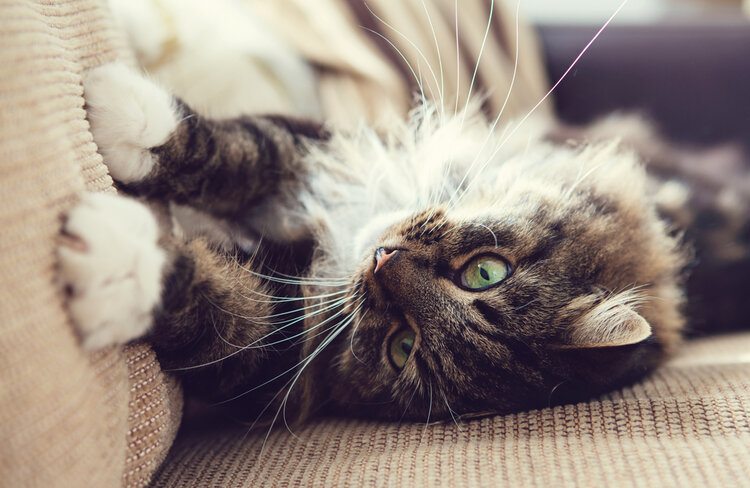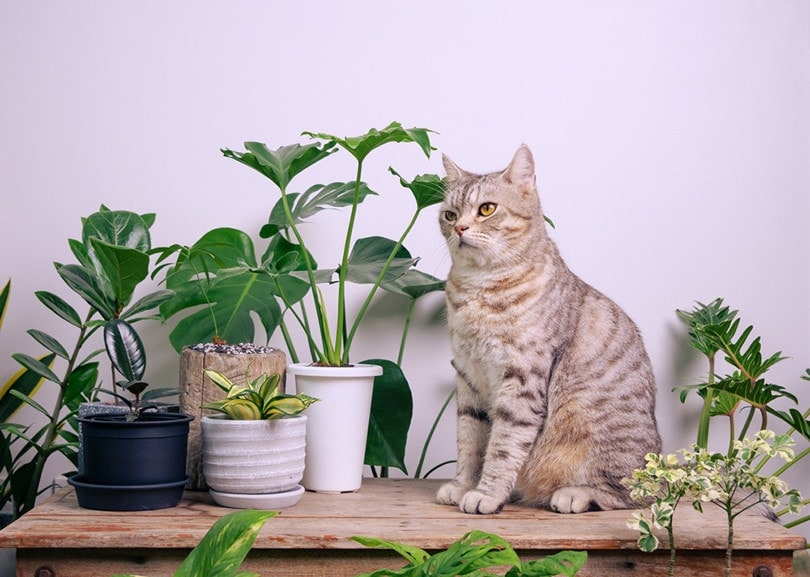Can You Use Baby Shampoo on Your Cat? Vet-Approved Effectiveness & FAQ

Updated on
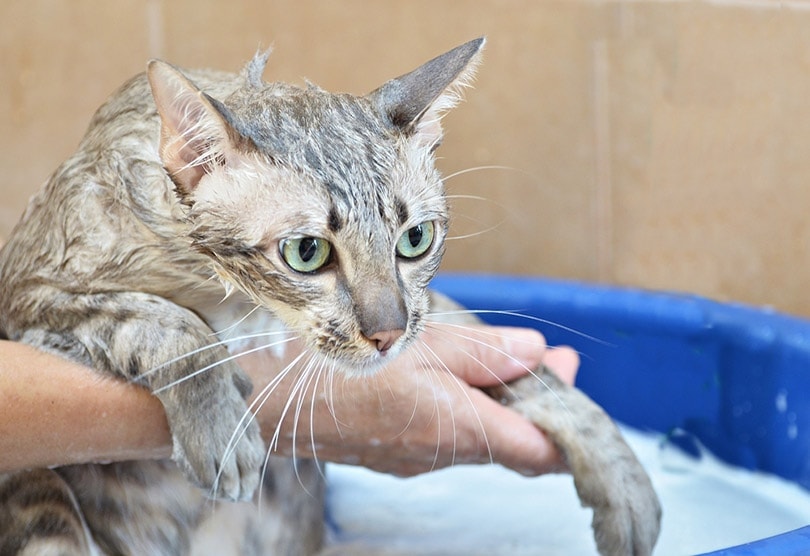
Click to Skip Ahead
Bathing your cat can be an adventure, although it may be perilous when you have to dodge claws and sharp teeth. A few breeds like the water, but most cat owners are unfamiliar with that type of animal. Most cats groom themselves meticulously making baths unnecessary but occasionally a messy situation may arise that warrants a bath. If you have to bathe your cat you want to use a shampoo formulated for cats. Shampoos designed for cats are ideal for the cat’s skin and coat, but you can use baby shampoo as a temporary substitute.
Baby products may seem safer for cats because they are designed for babies, but tiny humans have different skin pH than cats. Using a shampoo designed for infants can dry out your cat’s skin and reduce the oil that keeps the fur shiny.
Differences in pH and Skin Layers
Baby shampoo is not as acidic as adult products because the pH is closer to the neutral range. Most babies have a pH level of 5.5, the same level as the shampoo, but the pH for cats (7.5) is more alkaline. An acidic cleaner can irritate skin and cause itching if it is used too often. Compared to babies and adults, cats have much thinner skin. Cats can have three to five skin layers, but humans have 10 to 15. That means a cat’s skin is more vulnerable to irritants and chemicals often found in products designed for humans.
Products To Avoid When Bathing Your Feline
Although adult shampoo and other bathing products may not cause serious harm to your cat, they are not suitable for the animal’s skin type. Most pet shampoos are affordable, and you do not need to apply much to a small feline unless you have a Mountain Lion or other exotic pet.
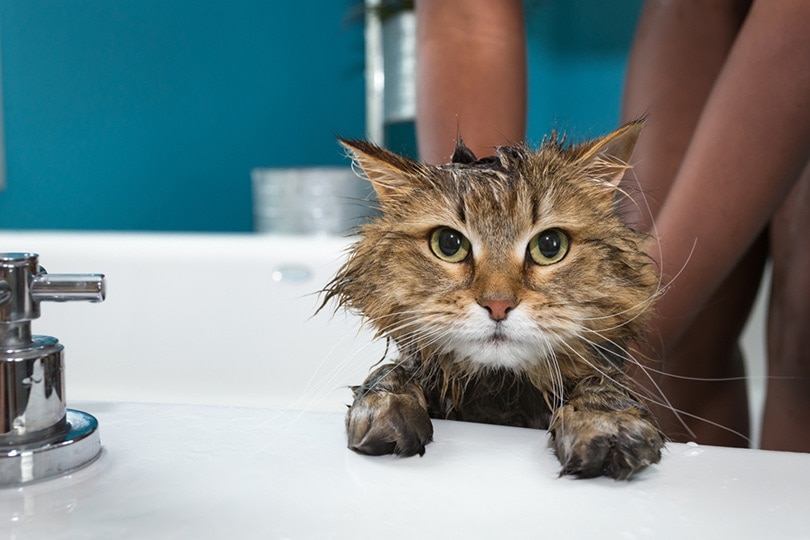
Shampoo for Adults
Baby shampoo is one of the few types of products for humans that’s safe to use occasionally, but most adult brands are not gentle on cats. The acidic shampoo can remove the animal’s protective oil, and it can contain colors, fragrances, parabens, or other ingredients that cause allergic reactions in cats. Some shampoos are made with sulfate sodium salts that can bother the skin, and in some cases, the salts can cause eye irritation. When skin becomes dry and itchy, it’s vulnerable to secondary bacterial and fungal infections.
Keeping your pet's skin and coat clean and healthy is very important, but finding a great shampoo can be harder than the actual grooming! We love our Hepper Pet Shampoos because they makes grooming so much easier. These pH-balanced formulas are made with natural ingredients like oatmeal, cucumber, and aloe. They are free of phthalates, sulfates, and soaps and very gentle on your pet's skin. Now you just need to decide which formula is best for your fur baby! Here’s a quick guide to help you choose the right option for your pet’s next bath!
 Hepper Colloidal Oatmeal Pet Shampoo |
 Hepper Waterless No Rinse Pet Shampoo |
|
|---|---|---|
| Natural cucumber & aloe scent |
Natural cucumber & aloe scent:
|
Natural cucumber & aloe scent:
|
| Safe for cats & dogs |
Safe for cats & dogs:
|
Safe for cats & dogs:
|
| Rinsing required |
Rinsing required:
|
Rinsing required:
|
| Free of harsh chemicals & nasty ingredients |
Free of harsh chemicals & nasty ingredients:
|
Free of harsh chemicals & nasty ingredients:
|
| Lathers easily |
Lathers easily:
|
Lathers easily:
|
Dishwasher Soap
The same chemicals in dishwasher soap that effectively remove oil sludge from bird feathers are not beneficial to cats. The oil-removing components can strip the protective oil coating from your cat’s skin and irritate it. Some brands also have fragrances that may affect your pet’s fur or skin.
Alternatives to Bath Time
Most healthy cats do not need baths often if they stay indoors and their coats are groomed regularly, but some cats, like the Sphynx, need weekly baths to keep their skin healthy. Others may need frequent baths because of a skin infection or other medical issues. If you’re out of cat shampoo and baby shampoo, you can use one of these alternatives for quick cleaning.
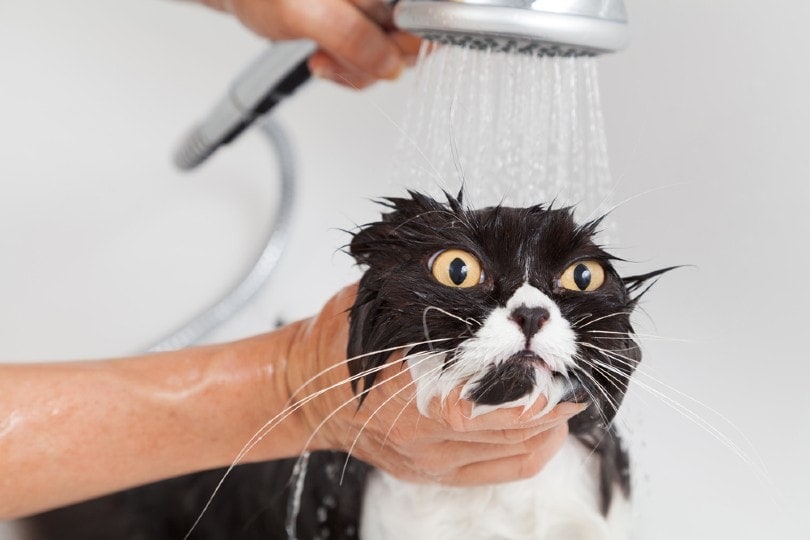
Pet Wipes
Pet wipes will not take care of large messes, like jumping into a cake mix, but they’re handy for minor cleaning. If your pet gets its paws dirty outside or has a slightly dirty coat, you can clean the fur with pet wipes until you work up the courage to run a bath.
Waterless Shampoo
If your cat is too excited for a bath, you can try a cat-specific waterless shampoo to clean its coat. You can use a powder or foam, and you do not have to rinse it with water. Waterless cleaners are helpful when:
- You’re traveling with your cat
- Cleaning a senior cat who does not groom itself very often
- Dealing with a cat that’s terrified of water
- Cleaning dirty paws after running in the dirt
- Bathing a cat with incontinence or potty-training issues
- Cleaning a cat with mobility problems
How To Bathe a Cat with Your Sanity Intact in 8 Steps
You may be unable to make bath time as fun as a Sesame Street song for your cat, but you can make it tolerable and hopefully less stressful. If your feline is in a hyper mood, it’s best to wait until the creature calms down. A lazy or sleepy cat is easier to clean than an animated one. These steps can help you clean your pet and complete the process with minimal injuries.
1. Brush the Cat’s Coat
Grooming your pet before the bath can remove dirt, debris, and loose hair that can wind up in the drain. Cats that grow accustomed to grooming eventually seem to like it, and it helps to do something nice for your pet before running the bath. However, some cats may not enjoy the next step as much.
2. Trim the Nails
Clipping your cat’s nails is not always fun, but it will help if your pet gets frantic and tries to latch onto your arms or face. Although not every cat will transfer it to a human, cat scratch fever is a real infection caused by the bacteria living under a cat’s claws or in the mouth. Symptoms of a cat scratch fever infection may not appear for several days but can include fatigue, fever, headache, appetite loss, and swollen lymph nodes.
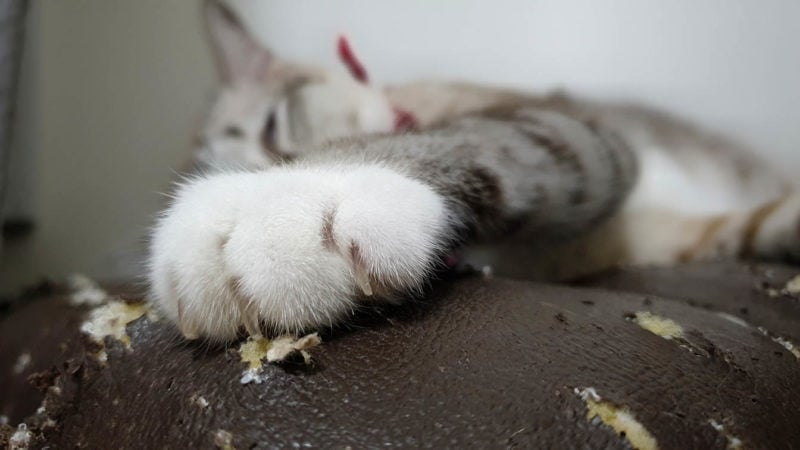
3. Place a Towel in the Tub Before Running the Water
A towel will give your cat traction if it feels uncomfortable with the smooth bottom. Cats trying to escape may become anxious when their paws slip, and the towel can make the bathtub seem safer.
4. Use a Hand Sprayer
Using a pitcher or hand-held sprayer to wet the coat is recommended. The water should be a bit warmer than lukewarm, but be sure that the temperature is not too cold or hot for your pet.
5. Apply the Cat Shampoo
Avoid adding shampoo to the face or eyes and start lathering the cat’s neck down to its tail. Use a washcloth with only a few drops of shampoo to carefully clean the face.
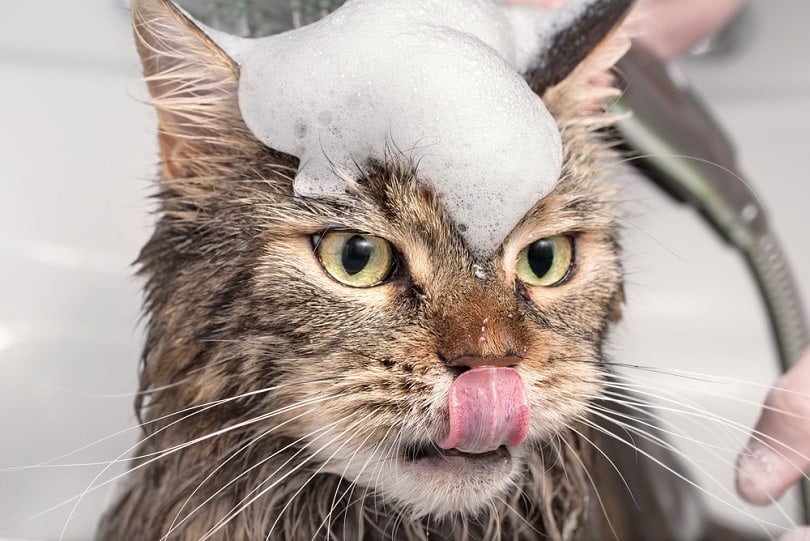
6. Rinse Thoroughly
Your cat will groom its coat after drying off, and you should ensure all the soap is washed away to keep the animal from swallowing it. Rinsing is often the hardest part because some cats get anxious when they know the process is almost over. An assistant may need to help you if your cat tries to bolt before the suds are washed off.
7. Dry Off
Use a large towel to dry your cat in a warm room. Most felines are not fond of the hairdryer, but if your pet can tolerate the sound, be sure to use the low setting to avoid irritating or damaging the skin.
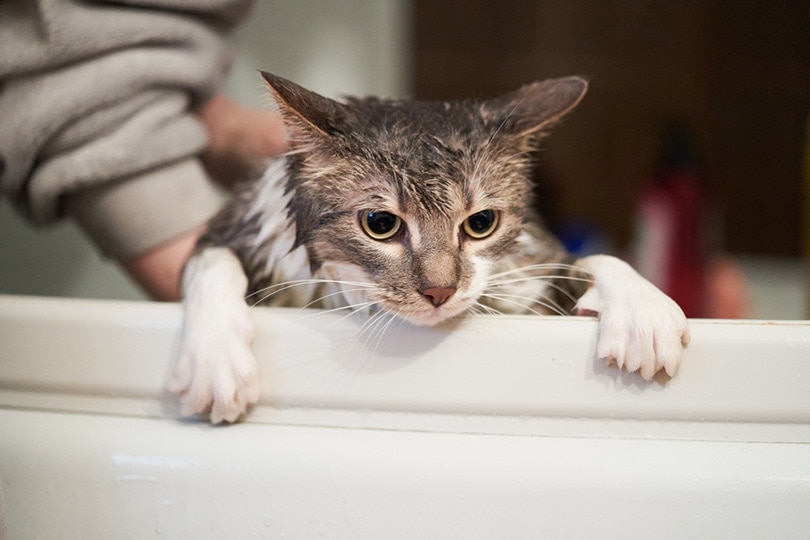
8. Provide a Treat or Mini-Meal
Bathing can be traumatic to some pets, but they may not feel the same way next time if you give them a treat or miniature meal after the experience.
Final Thoughts
Baby shampoo is a gentle alternative to adult products, but it should not be your cat’s primary cleaner for bath time. Although it’s less abrasive on baby skin, it’s still too acidic for cats. Felines need shampoos that match the pH of their skin, and most cat shampoos are designed to clean fur and skin without removing protective oils. You can keep baby shampoo as a backup, but your cat will be happier and more comfortable when you use products designed for cats.
- See also: 11 Best Waterless Cat Shampoos
Featured Image Credit: angnokever, Shutterstock



